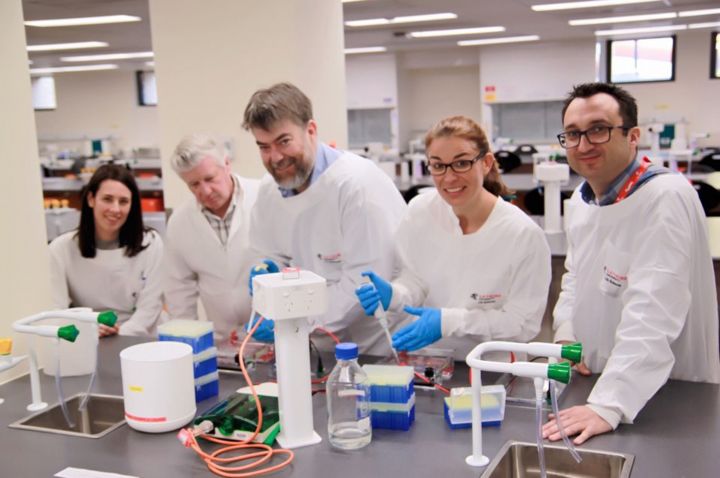Principal Investigator(s):
Professor Paul R. Fisher, Dr. Andrew H. Evans, Dr. Danuta Z. Loesch-Mdzewska, Prof. E. Storey, Dr. Sarah J. Annesley
Project Title:
Mitochondrial function and cellular stress signalling biomarkers in immortalized lymphocytes from prodromal PD cohorts.
Study Rationale:
The mitochondria are tiny compartments within cells, responsible for producing >90% of the cell’s energy in the form of a small energy-carrying molecule called ATP. Our previous studies showed that cultured (immortalized) white blood cells (lymphoblasts) from patients with Parkinson’s disease (PD) have hyperactive but functionally normal mitochondria, elevated levels of ATP and proteins involved in mitochondrial energy metabolism, as well as higher activities of the cellular stress-sensing proteins AMPK and TORC1. None of these differences were affected by patient age or gender, disease duration or severity, suggesting that they may have been present and stable in preclinical disease stages. Combining them discriminated between PD and control cells with better than 80% reliability.
Hypothesis:
We hypothesize that mitochondrial and cellular stress-sensing differences between PD and control lymphoblasts from at-risk patients with early (prodromal) disease symptoms will allow detection and prediction of subsequent conversion to diagnosed PD.
Study Design:
We will conduct a short (3-year) longitudinal study of patients from two at-risk groups – those with REM Behavioural Sleep Disorder (RBD) and reduced sense of smell; and those with Essential Tremor plus a family history of PD. We will annually conduct clinical examinations as well as collect and store white cells in blood samples from a total of 300 individuals belonging to either of these two cohorts. From up to 30 patients who progress to PD during the study and an equal number of matched controls, we will measure key mitochondrial and cellular stress-sensing protein functions in lymphoblasts. We will determine if a combination of these measurements will allow detection and prediction of patients developing PD.
Impact on Diagnosis/Treatment of Parkinson’s disease:
By the time PD can be diagnosed clinically, extensive neurodegeneration in affected brain regions has already occurred. This study may lead to a reliable means of detecting PD before it progresses to this stage. It could therefore allow or facilitate discovery of earlier, more effective treatment or management aimed at slowing disease progression.
Next Steps for Development:
- In some at-risk patient groups, conversion to diagnosable PD may take up to 20 years. Further longitudinal studies over much longer time periods should be conducted to reveal how early the lymphoblast mitochondrial and cellular stress-signalling biomarkers appear in the disease process.
- Lymphoblast mitochondrial and cellular stress-signalling biomarkers in at-risk patient groups could potentially return to normal, if an effective early treatment is given. Clinical trials of any such potential treatments should include lymphoblast mitochondrial and cellular stress-signalling measurements to reveal if this is so.
Funding
Project co-funded with The Michael J. Fox Foundation for Parkinson’s Research
View our other research projects
Interested in registering for Clinical Trials? Register your Interest.


